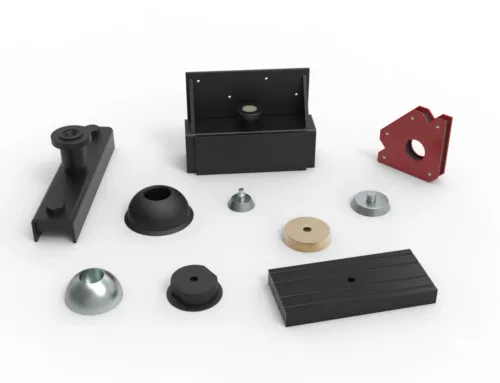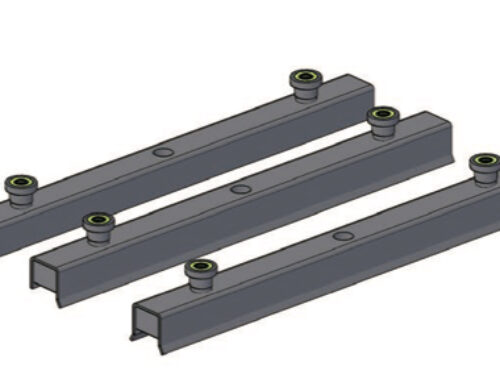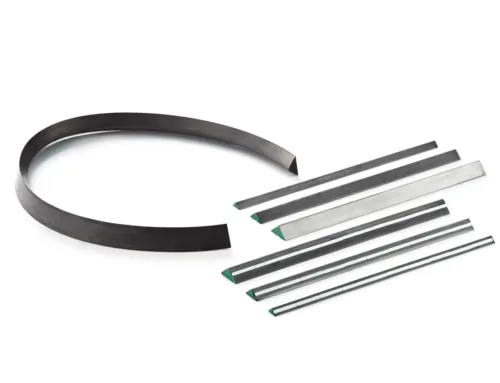Magnet machining: How are magnets shaped with precision?
Many people think magnets are shaped once during production—but that’s not the case. Most magnets, especially rare earth ones, require careful machining to reach their final size and tolerance.
Machining rare earth magnets is essential because their hard and brittle nature prevents them from being made to final dimensions in one go. Cutting, drilling, and grinding are key steps in achieving precision.
Even with powerful magnetic materials like NdFeB and SmCo, it’s impossible to skip machining. Here’s why—and how I approach it with clients in the magnet industry.
What is the machining of magnets?
Magnet machining can’t be ignored. Most magnets can’t be molded or pressed into their final shape, especially sintered rare earth types.
Magnet machining refers to the process of modifying the shape, size, and surface of magnets using methods like cutting, grinding, or drilling to achieve precise dimensions.

Multiple wire cutting
Why can’t we skip machining?
Rare earth magnets like sintered NdFeB are very hard but also brittle. During the pressing and sintering stages, we can’t control shape with high precision. Magnet blocks come out rough, oversized, and often with tolerance gaps.
That’s where machining comes in. Without it, you can’t meet tight dimensional specs required in industries like motors, sensors, and medical devices.
What are the main machining techniques?
| Machining Method | Tools Used | Common Applications |
|---|---|---|
| Cutting | Diamond/CBN blades, wire saws | Trimming large blocks into smaller ones |
| Drilling | Diamond bits, lasers, ultrasound | Creating holes in ring/arc magnets |
| Grinding | Resin or metal grinding wheels | Achieving surface flatness and accuracy |
| Barrelling | Tumblers for chamfering | Edge rounding to improve safety |
Each method has its own role depending on the material type, shape complexity, and required precision.
How do you machine magnets?
Machining magnets is not like machining steel or plastic. It needs extra care due to magnet material properties.
Magnets are machined using tools like diamond blades or grinding wheels. The method depends on magnet type, shape, and application. Precision and care are crucial.
1. Cutting Techniques
Blade Cutting
We use diamond or CBN-coated blades. The blade’s thickness, speed, and feed affect the quality and final tolerance.
Sub-types:
- Cylindrical Cutting: Often used for disc-shaped magnets.
- Internal Cutting: Used to cut holes or inner profiles.
Wire Cutting & Laser Cutting
These methods are great for making complex shapes. Wire EDM and lasers give precise results, but they are slower and more expensive. I usually recommend these for small batch or high-precision parts.
Wire Saw Cutting
This is a go-to method for cutting thin slices or delicate shapes with minimal damage.
2. Drilling Techniques
Magnets with inner holes—especially ring and arc types—often need drilling after sintering.
Types of Drilling:
- Solid Drilling: Performed using diamond or laser tools. Best for small holes.
- Hollow Drilling: Used when holes are bigger than 4mm. We can reuse the core from the hole to make other parts, improving material use.
3. Grinding Techniques
This step ensures surface flatness, tight tolerances, and cosmetic appearance.
Grinding Types:
- Cylindrical Grinding
- Internal Grinding
- Surface Grinding
- Copy Grinding: We design grinding wheels to match the final contour.
For most of my customers, grinding is the most frequent machining step, especially when producing magnets for motors or sensors.
4. Barrelling / Chamfering
Some customers ask for safe edges—especially in assemblies that involve handling. Barrelling helps remove sharp edges, making assembly safer and more ergonomic.
What is magnet manufacturing?
Many people confuse magnet making with magnet machining. They’re different steps in the process.
Magnet manufacturing includes all stages from raw powder to final magnetic component, including pressing, sintering, and sometimes machining.

Main Stages of Manufacturing
| Stage | Description |
|---|---|
| Powder Prep | Mixing rare earth elements and grinding into fine powder |
| Pressing | Compacting powder under magnetic field |
| Sintering | Heating under vacuum or inert gas to form solid magnet |
| Machining | Cutting, drilling, and grinding to final shape and tolerance |
| Coating | Applying protective layers like Ni, Zn, or epoxy |
| Magnetizing | Exposing finished part to strong magnetic field |
Machining happens after sintering and before coating. That’s why choosing the right machining approach is critical—especially if coatings like Ni-Cu-Ni or epoxy are involved. Improper machining can damage the surface, leading to poor adhesion or corrosion.
How are magnets used in machinery?
Machined magnets are essential in modern machinery. Almost every electromechanical system uses them.
Magnets in machines convert electrical energy to motion, sense position, or hold components. Precision-machined magnets enable compact, high-performance systems.

coreless motor photo from Assun Motor designs
Where do machined magnets go?
1. Motors
Permanent magnet motors need magnets with precise shapes to balance rotor dynamics. Most rotors use arc magnets, which we grind with tight tolerance.
2. Sensors
Hall-effect sensors use tiny magnets that must fit snugly in casings. A few microns of mismatch can affect performance.
3. Medical Devices
MRI machines, surgical tools, and pumps use small custom magnets. These must be ground and drilled with high accuracy and free of burrs.
4. Aerospace and Robotics
Space and robotic applications demand lightweight and powerful magnet assemblies. We machine to exact specs to ensure performance and safety.
Magnet Type Considerations
| Magnet Type | Machining Need | Notes |
|---|---|---|
| Sintered NdFeB | High | Very brittle, needs diamond tools |
| SmCo | Moderate to high | Stable but hard |
| Bonded Magnets | Low to moderate | Often near-net-shape, less machining needed |
| Ferrite | Moderate | Lower cost, can be machined with standard tools |
Bonded magnets, such as injection molded ones, need only minor trimming. But compression molded magnets still need grinding, especially if precise height or flatness is required.
Conclusion
Magnet machining is a key step for ensuring performance and fit. It turns raw magnetic blocks into precise, usable components.





Leave A Comment